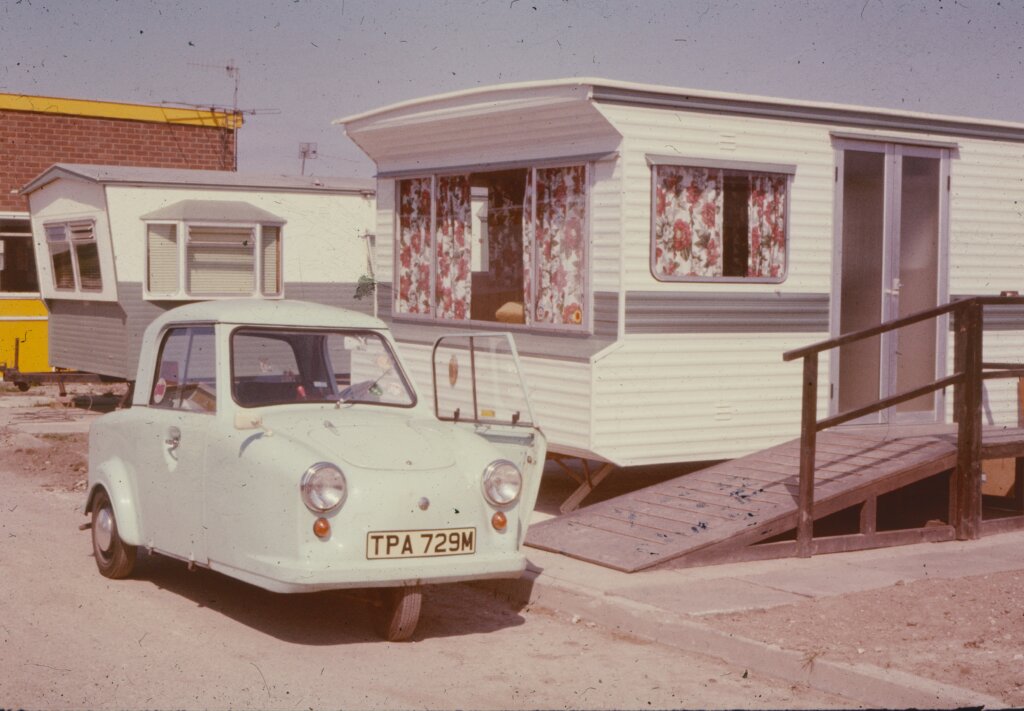The history of mobile homes can be traced back to the early 20th century when the need for affordable and portable housing began to rise.
Today, mobile homes are a popular form of housing for many people and the industry has evolved significantly over the years.
The Beginning
The early history of mobile homes can be traced back to the 1920s and 1930s when people began experimenting with using railway cars as housing. These early mobile homes were often used by people who were traveling or working on the railroad and they were a way for people to have a place to live that was both affordable and portable.
Back then, it wasn’t a widely accepted approach to affordable housing. Now it’s considered a prominent start in the evolution of mobile homes.

First Step
However, it wasn’t until the 1940s and 1950s that the mobile home industry began to take off. The post-war boom led to a housing shortage, and many turned to mobile homes as an affordable option. The government also played a role in the mobile home industry’s growth by providing loans and subsidies to veterans and other low-income families to help them purchase mobile homes.
During this time, mobile homes were often made of wood and were not very well-insulated. They were also not well-built; many people found them drafty and uncomfortable. Still, they were a popular form of housing as they were affordable and portable.

A Shift From The Tracks
In the 1960s and 1970s, the mobile home industry began to change. Manufacturers started to use new materials, such as aluminum and fiberglass to build mobile homes. These new materials made mobile homes more durable, energy-efficient, and comfortable.
The industry also began to focus more on aesthetics and manufacturers started to design mobile homes that looked more like traditional houses.

HUD Intervention
The 1970s also saw the introduction of the HUD Code, which set standards for the construction and safety of mobile homes. The HUD Code ensured that mobile homes were built to certain standards and that mobile homes were safe for people to live in.
This was a major step forward for the mobile home industry, as it helped to improve the reputation of mobile homes and made them more appealing to buyers.
New Age
In the 1980s and 1990s, the mobile home industry continued to evolve. Manufacturers began to use new technologies, such as computer-aided design and computer-controlled manufacturing, to build mobile homes. This led to mobile homes that were more energy-efficient and better built than ever before.
The industry also began to focus on luxury mobile homes, which were designed to appeal to buyers who wanted more than just a basic home.

Current Scene
In recent years, mobile homes have become even more advanced. They are now available with high-tech features like solar panels, energy-efficient appliances and smart home technology. The industry has also begun to focus on making homes more environmentally friendly, with many homes now being built with sustainable materials and green technologies.
Downside?
Despite the many mobile home advancements, some people still have a negative perception of these homes. Many people still view mobile homes as “trailers” and believe they’re poorly constructed and unsafe.
However, these perceptions are often based on outdated information, and modern mobile homes are just as safe and well-built as traditional homes. Manufacturers continue to use new technologies to build mobile homes and focus on luxury mobile homes. Many people also live in mobile homes because they’re portable and can be moved to different locations.
To Wrap It Up
The mobile home industry has come a long way since the early days of railway cars being used as housing. Today, mobile homes are a popular form of housing that is both affordable and comfortable to live in. The industry has evolved significantly over the years and it continues to evolve today.
The future looks bright for mobile homes, and we’ll likely continue to see new and exciting developments in the industry in the years to come.




